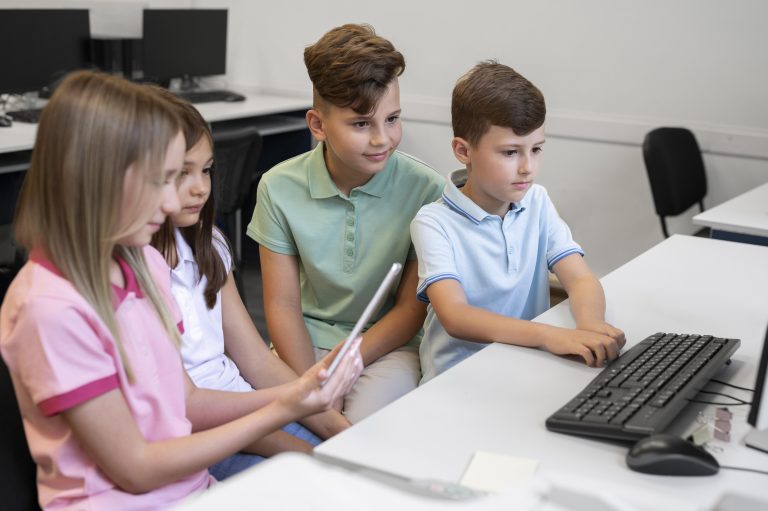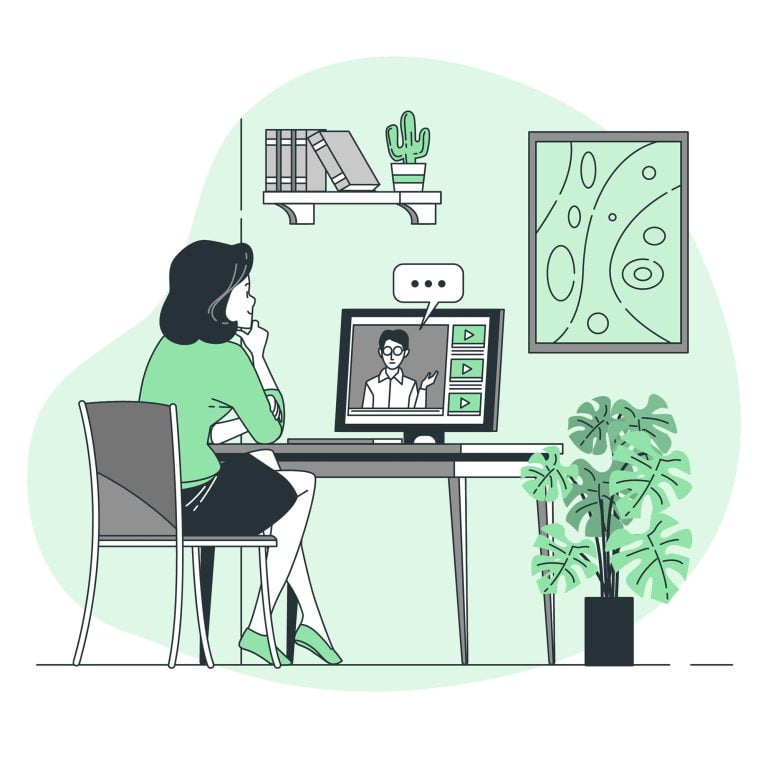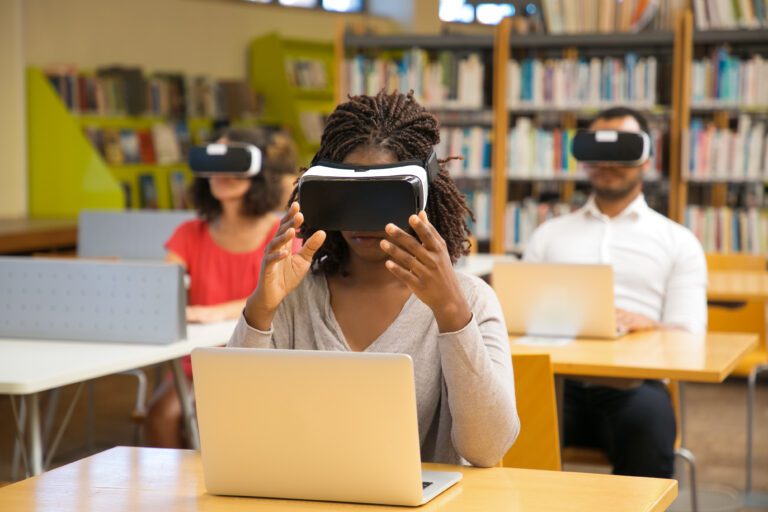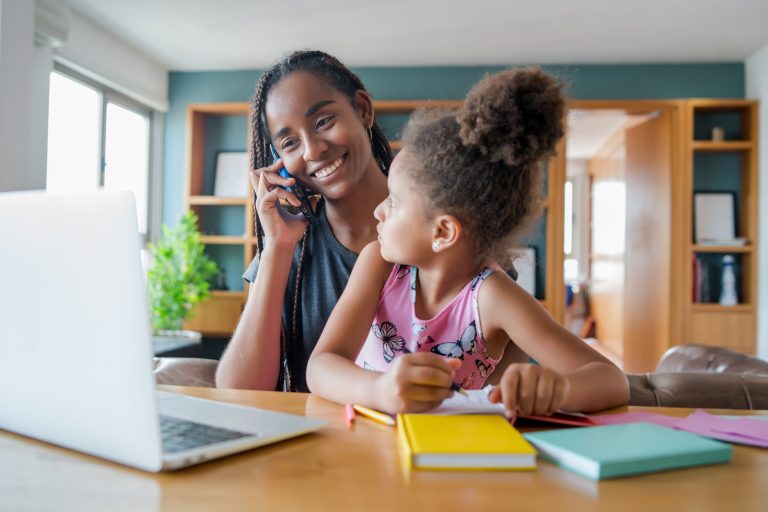Peering into the digital horizon, it’s impossible to ignore the transformational role of virtual learning tools in the realm of teletherapy. This article will serve as your guiding light, illuminating the path toward better understanding of these revolutionary tools. We’ll start by exploring the fundamentals, providing context around the relevance and rise of teletherapy practices.
The heart of our exploration lies in unpacking the specific virtual learning tools taking center stage in teletherapy – from video conferencing platforms to digital whiteboards, even venturing into the realm of virtual reality. With each tool, we’ll dive into its unique capacities, how it bolsters the teletherapy process, and the real-world applications that make these tools so powerful.
Beyond the tools themselves, this article seeks to uncover the ways they overcome traditional barriers in therapy, bringing mental health services within reach for those previously hindered by distance and accessibility issues. We’ll investigate the impact these tools have on patient outcomes and their role in the promising future of teletherapy. Lastly, we’ll offer practical tips for therapists keen on harnessing these virtual learning tools, aiming to enhance their practices and their professional growth in this rapidly evolving field. Get ready for a comprehensive journey through the fascinating digital landscape of teletherapy.
Let’s talk about virtual learning tools in teletherapy. These are online resources, platforms, and technologies used to facilitate teletherapy sessions. The magic lies in their ability to connect therapists with clients, transcending geographic boundaries and providing a space for meaningful interaction and healing. It’s like having a therapist’s office right in your own home – convenient, isn’t it?
Definition and Importance of Virtual Learning Tools
Now, why are these tools so important? Picture this. Lucy, a teenager from a small town, struggles with anxiety. Her local resources are limited and she’s been waiting for months to see a mental health professional. Once introduced to teletherapy through a virtual learning platform, she’s able to connect with a licensed therapist from the city, receive personalized attention and start her journey towards better mental health.
Telehealth and Teletherapy have seen a significant increase in usage worldwide due to the COVID-19 pandemic. Here are some statistics and trends from the search results:
- In the US, consumer adoption of telehealth has skyrocketed, from 11% in 2019 to 46% in 2021[1].
- Telehealth is utilized for 13% to 17% of US patient visits across all specialties[2].
- The highest penetration of telehealth in the US is in psychiatry (50%) and substance use treatment (30%) [1].
- More than 60% of physicians reported that telehealth is easy to use within their practice across urban, suburban, and rural locations[2].
- In the US, the highest rates of telehealth visits were among those with Medicaid (29.3%) and Medicare (27.4%), Black individuals (26.8%), and those living in rural areas (24.7%) [3].
- Globally, only 2% of insurers reported that 75% or more insured people had utilized telehealth services in 2021[4].
- The global telehealth market is expected to decline from $80.53 billion in 2021 to $102.42 billion in 2022[5].
- Countries around the world began to adopt more telehealth options during the pandemic, and most are still in the early stages of implementation[2].
- Telehealth is used for various services including appointments to diagnose common illnesses and infections, follow-up visits after procedures or hospitalizations, talk therapy, management for chronic conditions, and more[2].
- Teletherapy has improved mental health care access, but not to such an extent that it delivers on promises of revolutionizing the mental health system[6].
Evolution of Teletherapy Practices
But teletherapy isn’t a new kid on the block. It’s been around, quietly evolving in the background. Initially, it relied on simple phone calls or emails. Fast forward to today, the teletherapy landscape has been dramatically reshaped with video conferencing tools, interactive whiteboards, instant messaging, and even virtual reality. It’s fascinating how it’s adapted to the digital age, isn’t it?
Take O-Connect for example. It’s a platform I find hard to ignore when talking about top-notch virtual learning tools. What sets O-Connect apart is its simplicity and effectiveness. It offers a seamless video conferencing experience, an easy-to-navigate interface, and interactive features that enrich the therapeutic process. It’s more than just a platform – it’s a game changer in the field of teletherapy.
As we embrace the digital age, teletherapy practices continue to evolve, and the importance of virtual learning tools becomes even more apparent. They’ve opened up a world of possibilities, redefining the way we think about therapy and bringing mental health services closer to those who need it most. As these tools continue to develop and diversify, the future of teletherapy looks brighter than ever.
Deep Dive into the Best Virtual Learning Tools
Video Conferencing Platforms: Your Virtual Classroom
Dive into the ocean of virtual learning tools, and you’ll find a treasure trove of video conferencing platforms. Picture this: a buzzing classroom, but instead of rows of desks, you see screens of eager faces. That’s the magic of video conferencing, turning your computer into a vibrant classroom.
Unveiling the Champion: O-Connect
Let’s spotlight one platform that’s been a real game-changer: O-Connect. Now, why O-Connect? Imagine having all the resources you need, from live lectures to interactive whiteboards, just a click away. It’s like having a school in your pocket.
O-Connect boasts an intuitive interface that even my 12-year-old nephew can navigate with ease. Its breakout room feature is a godsend, letting you divide your students into small groups for focused discussions. Then there’s the virtual hand-raising feature, encouraging shy students to participate without feeling spotlighted.
Crafting Engaging Content: The O-Connect Edge
O-Connect isn’t just about live sessions. You can upload pre-recorded lectures, turning your classroom into a 24/7 learning hub. There’s no rush, no fear of missing out. Students can pause, rewind, and revisit the lessons at their own pace.
When I first switched to O-Connect, I was skeptical. How could a virtual platform replicate the dynamism of my classroom? But then, I saw my students solving math problems on the digital whiteboard, debating literature in breakout rooms, and their excitement for learning was palpable, even through the screen.
Accessibility and Inclusivity: The Heart of O-Connect
is it’s frequently overlooked champion attribute – the discreet subtitle functionality. It brings a revitalizing experience for individuals with auditory challenges, providing them a renewed sense of appreciation. Furthermore, it bestows a valuable advantage upon those who are not fluent in English, fostering a deeper understanding of the content That’s what I call leveling the playing field!
Let’s not forget the cherry on top: O-Connect’s affordable pricing. Quality education shouldn’t break the bank, and O-Connect stands by this belief. Offering flexible pricing plans, it’s accessible to schools of all sizes, marking a giant leap towards democratizing education.
So, here’s my challenge to you: Dive into the world of O-Connect, test out its features, feel the pulse of its virtual classroom. You might just discover that this is the platform you’ve been searching for. Remember, the goal isn’t just to teach; it’s to inspire a love for learning. And with the right tools, you’re already halfway there.
Overcoming Traditional Barriers
In our digitally connected world, distance and accessibility are no longer barriers that limit the reach of mental health services. Let me illustrate this with a compelling story. Picture a rural town – we’ll call it Maplewood, a quaint little place brimming with charm, but miles away from the nearest mental health clinic. This was a real challenge for residents of Maplewood. Until virtual learning tools entered the scene.
Now imagine Jane, a middle-aged woman from Maplewood, who has been battling anxiety for years. With no services nearby, her struggles remained unaddressed. Then, she discovered teletherapy. Using a reliable video conferencing platform like O-Connect, Jane was able to access professional mental health support right from her living room. This is just one example of how these tools are erasing geographical boundaries, bringing professional support within reach for individuals like Jane, no matter where they are.
Case studies showing increased availability
But the wonder of virtual learning tools extends beyond bridging distances. Consider the case of Mike, a hard-working single father juggling multiple jobs in the city. He’s been feeling the weight of depression but his hectic schedule leaves no room for traditional therapy appointments. Here’s where asynchronous teletherapy comes into play. With platforms supporting this mode, Mike could engage in therapeutic activities at his own pace, whenever he finds a quiet moment. This is the beauty of accessibility enabled by virtual learning tools, tailoring mental health support to fit individual lifestyles.
Now, let’s talk about how these tools are making mental health services more available. It’s crucial to grasp the significance of enhanced accessibility, which goes beyond merely having an increased number of therapists or clinics. It involves dismantling obstacles, diminishing societal prejudice, and connecting with individuals who may have never considered seeking assistance previously.
For instance, a recent study involving high school students used an anonymous chat platform to provide mental health support. The result? More students reached out, seeking help for their struggles – something they hesitated to do in a face-to-face setting.
Similarly, a teletherapy program for veterans suffering from PTSD showed significant improvements in participation rates compared to traditional in-person services. The anonymity and convenience offered by virtual platforms gave them the comfort to open up about their experiences and receive the necessary support.
These are just glimpses of how virtual learning tools are changing the face of mental health services, ensuring everyone who needs help, gets help. In the next section, we’ll delve deeper into the specific tools that are making this revolution possible. Stay tuned!
Impact of Virtual Learning Tools on Patient Outcomes
The magic of virtual learning tools in teletherapy starts to shine when we examine their impact on patient outcomes. Delving into the world of comparative studies and data analysis, it’s clear these tools are revolutionizing the field of teletherapy.
The Transformational Power of Data
Let’s consider a recent study by Johns Hopkins Medicine, where they analyzed the efficacy of teletherapy sessions for patients with anxiety disorders. They used O-Connect, an innovative virtual learning platform, as their primary tool for these sessions. The results? Patients reported a significant decrease in their anxiety levels after engaging in virtual teletherapy. Not only that, but they also reported feeling more comfortable and relaxed in their own environment, which potentially led to more honest and productive sessions.
But that’s not all. O-Connect’s real-time data analytics function also allowed therapists to monitor their patients’ engagement levels during the sessions. This provided invaluable insights, enabling therapists to tailor their strategies based on individual patient needs.
Predicting the Future: Trends and Growth
There’s no denying the current trajectory suggests a promising future for virtual learning tools in teletherapy. The key question to ponder is: what lies ahead?
Envision a realm where therapy sessions are enhanced by virtual reality. Picture a patient, wearing a VR headset, immersed in diverse scenarios, acquiring coping mechanisms within the safety of their virtual surroundings. It may sound like something out of a futuristic tale, but groundwork is already being laid, poised to revolutionize the teletherapy landscape in the coming years.
The potential for advancement is vast. As these virtual learning tools progress, so too will their capabilities. However, it’s not solely about new technology; it also encompasses expanded accessibility. A growing number of individuals worldwide will gain entry to high-quality mental health services, effectively eliminating geographical barriers. This embodies the true potency and promise of virtual learning tools in teletherapy.
Let us bear in mind that technology serves as a facilitator. The true marvel occurs when therapists and patients embrace its potential for healing and personal development. Wouldn’t witnessing such a transformation be a remarkable experience?
Real-World Applications of Virtual Learning Tools in Teletherapy
Transformative Stories from Therapists
Exploring the real-world applications of virtual learning tools in teletherapy takes us into the captivating stories of therapists who’ve fully embraced the digital age. Let’s begin with the journey of Dr. Jane, a seasoned therapist based in New York.
Jane, for years, had established a successful face-to-face counseling practice. But when she expanded her services online, she hit an unexpected challenge – maintaining a therapeutic connection in a virtual environment. That’s when she discovered O-Connect, a platform designed to enhance online teaching and content distribution.
Utilizing O-Connect, Jane noticed significant improvements in her teletherapy sessions. The platform’s video conferencing feature offered high-quality, lag-free video calls, ensuring a seamless and intimate communication channel with her clients. Additionally, O-Connect’s whiteboard function served as a creative outlet for clients, allowing them to express their thoughts visually, which is often easier than verbal expression for many.
Touching Base with Patients
Of course, our investigation wouldn’t be complete without hearing from the other side of the screen. So, let’s step into the shoes of Max, a client who’s experienced teletherapy first-hand.
Max, a tech-savvy college student, was initially skeptical about therapy. He had been struggling with anxiety, but the thought of physically going to a therapist’s office was daunting. That’s when he decided to give teletherapy a shot. Max’s therapist used O-Connect, offering him an accessible and safe space to explore his mental health challenges.
In Max’s words, “The interactive features of O-Connect make sessions less clinical and more personal. It’s just like playing a game, only that this game leads to better mental health. I can express my feelings visually on the digital whiteboard, use emojis during video calls to communicate my mood, and the best part? I can do all of this from the comfort of my dorm room.”
Tools for Success
What we learn from Jane’s and Max’s stories is the transformative power of virtual learning tools in teletherapy. For therapists like Jane, platforms like O-Connect offer innovative ways to communicate and connect with clients. On the flip side, for clients like Max, these tools make therapy a more engaging, accessible, and less intimidating experience. The bottom line? These digital tools aren’t just add-ons; they’re game changers, reshaping the teletherapy landscape for the better. If you’re a therapist looking to boost your practice or a client seeking an effective therapy format, take a leap into the world of virtual learning tools. Trust me, it’s a game-changer!
Utilizing Virtual Learning Tools to Enhance Teletherapy Practices
As the boundaries of therapeutic practice stretch into the virtual realm, therapists are faced with an exciting challenge – how to make the best use of virtual learning tools. Let’s start by focusing on the first stepping stone of this digital adventure.
- Craft a Comfortable Virtual Environment – Therapists need to provide an environment where clients feel safe and comfortable to express themselves. With platforms like O-Connect, you can customize your virtual space to create an atmosphere of warmth and trust. Remember, just as you would arrange your physical office to promote comfort, so too should your virtual space.
Leveraging the Power of Digital Whiteboards
Imagine this scenario: you’re working with a client who struggles to articulate their emotions. Words can be tricky, right? Here’s where digital whiteboards step in, offering an expressive, interactive canvas. The client might draw, doodle, or even scribble – providing rich insights into their emotional state. These visual cues can guide your therapeutic approach, making sessions more impactful.
Virtual Reality – A New Frontier in Teletherapy
Imagine if you could transport your client to a tranquil beach or a serene forest during a session. Sounds incredible, doesn’t it? Virtual Reality (VR) in teletherapy isn’t just science fiction, it’s happening now. For example, exposure therapy for phobias or PTSD can be made less intimidating, and even more effective, with the controlled use of VR.
Embracing Continued Professional Development
Now, let’s move on to the thrilling aspect of professional growth in the field of teletherapy.
- Stay Curious, Stay Informed The field of teletherapy is evolving rapidly. Keep your finger on the pulse by attending webinars, online workshops, or even virtual conferences. Platforms like O-Connect often host such events, offering you a chance to learn from the best in the business.
- Peer Learning – Your Secret Weapon Networking isn’t just for entrepreneurs, it’s equally vital for therapists. Engage in peer learning, share your experiences, and learn from the challenges and successes of others. Remember, collaboration often leads to innovation.
- Experiment and Reflect Trial and error are part and parcel of mastering virtual learning tools. So, try different techniques, reflect on their effectiveness, and tweak your approach. Your flexibility and adaptability are your greatest strengths in this journey.
In the dynamic world of teletherapy, virtual learning tools are your trusty companions. Embrace them, master them, and watch as they unlock new dimensions in your therapeutic practice. As we move forward in this digital age, it’s the brave pioneers who venture into uncharted territories that will shape the future of teletherapy. Ready to join the revolution?
Unleashing the Power of Virtual Healing
The journey through the realm of teletherapy, powered by virtual learning tools, is a transformative one. It’s like a thrilling roller-coaster ride, filled with twists and turns. Each digital tool, be it digital whiteboards, VR, or platforms like O-Connect, add a new dimension to therapy sessions, enhancing their effectiveness and depth.
Mastering these tools is not an overnight endeavor – it requires a blend of curiosity, tenacity, and a dash of adventurous spirit. Picture this: You’re on an endless journey, where every pit stop is an opportunity to learn something new, a chance to experiment and refine your practice. That’s the true essence of continued professional development. It’s about striving to be better, one session at a time.
Finally, remember, in the vast universe of teletherapy, you are the guiding star, and these virtual tools are your trusty spaceships. They can propel you to new heights, but it’s your direction that defines the destination. So, take the wheel, blaze new trails, and unleash the power of remote healing. The future of teletherapy is in your hands. Now that’s a powerful thought, isn’t it?
Frequently Asked Questions
1. How do Virtual Learning Tools impact Teletherapy practices?
Virtual Learning Tools act as a jetpack to Teletherapy practices. With the arsenal of digital tools at their disposal, therapists can level up their sessions, adding layers of interactivity and engagement. They can bring ideas to life with digital whiteboards, simulate real-world scenarios with VR, and manage therapy sessions seamlessly on platforms like O-Connect. That said, there’s a flip side to this too – while the vast array of tools can be empowering, it can also be overwhelming if not chosen wisely.
2. Why should I invest time in mastering these tools?
Because, my friend, knowledge is power. Imagine this – you’re in a therapy session, and you have the perfect tool at your fingertips that can illuminate a concept or offer a fresh perspective. But alas, you are clueless about how to use it. Pretty frustrating, right? By investing time in learning these tools, you’re not only enhancing your therapy sessions but also saving yourself from such frustrating situations. However, remember, mastering these tools requires patience and practice, so don’t expect instant results.
3. What’s so special about O-Connect?
Well, as someone who’s traversed the terrain of Virtual Learning platforms, I can vouch for O-Connect. It’s like the Swiss Army Knife of Virtual Learning platforms. From managing sessions to sharing content, everything is a breeze on O-Connect. Its interactive features like polling and whiteboarding add a dash of fun to the sessions, enhancing learner engagement. Though platforms like Zoom and Google Classroom have similar features, what sets O-Connect apart is its seamless usability and robust functionality.
4. How can these tools enhance my Continued Professional Development?
These tools are not just a means to enhance therapy sessions; they’re also gateways to your professional growth. Every new tool you master, every feature you explore, is a feather in your cap. You’re not just learning new tools; you’re becoming a better therapist, one who is equipped to face the challenges of the digital age. However, this journey of learning is not without its hurdles. You might hit roadblocks, you might get overwhelmed, but remember, it’s all part of the process.
5. Are there any downsides to these tools?
Absolutely, just like a coin, these tools have two sides. On one hand, they empower therapists with endless possibilities, on the other, they come with challenges like steep learning curves, privacy concerns, and technical glitches. For instance, while O-Connect is user-friendly, platforms like Microsoft Teams can be complex to navigate for beginners. So, it’s all about finding the tool that aligns with your needs and comfort.
6. Can Virtual Learning Tools replace traditional therapy methods?
As much as I love the capabilities of Virtual Learning Tools, they are not a substitute for traditional therapy methods but a complement. They bring a new dimension to therapy, but the essence of therapy – the human connection, the empathy, the compassion – is something that technology cannot replicate. So, while these tools can supercharge your sessions, they cannot replace you – the therapist.
7. Are these tools just for individual therapy, or can they be used for group sessions?
Whether you’re conducting an individual session or a group therapy, these tools have got you covered. They are designed to cater to diverse therapy scenarios, and with platforms like O-Connect, managing group sessions is as easy as pie. That said, each tool has its unique strengths and weaknesses, so choose your tools wisely based on your specific requirements.
So, there you have it. Armed with these insights, you’re all set to embark on your journey of teletherapy with Virtual Learning Tools. Remember, it’s a journey of learning, growth, and most importantly, healing. But, I’m curious, are you ready to take the plunge and transform your teletherapy practice with these tools? Are you excited, anxious, or maybe a little bit of both? Do let me know!
Summary
- Virtual Learning Tools like O-Connect can dramatically enhance teletherapy practices by adding interactivity and engagement to sessions, making it a top pick for therapists.
- Mastering these tools is essential for modern therapists, not only improving therapy sessions but also fostering personal professional development.
- O-Connect stands out among virtual platforms due to its robust functionality and seamless usability, despite the presence of other options like Zoom and Google Classroom.
- These tools complement traditional therapy methods rather than replace them, with their suitability for both individual and group therapy sessions, offering a new dimension to the therapeutic process.
Citations:
[1] https://www.mckinsey.com/industries/healthcare/our-insights/telehealth-a-quarter-trillion-dollar-post-covid-19-reality
[2] https://www.singlecare.com/blog/news/telehealth-statistics/
[3] https://aspe.hhs.gov/sites/default/files/documents/4e1853c0b4885112b2994680a58af9ed/telehealth-hps-ib.pdf
[4] https://www.statista.com/statistics/1290498/utilization-of-telehealth-services-worldwide/
[5] https://www.globenewswire.com/news-release/2022/02/11/2383716/0/en/Telehealth-Global-Market-Report-2022.html
[6] https://time.com/6071580/teletheraphy-mental-health/




![Remote Collaboration tools with Cloud-Based File Storage for Dysgraphia Instructors [PowerPoint] Remote Collaboration tools with Cloud-Based File Storage for Dysgraphia Instructors [PowerPoint]](https://collaborationsky.com/wp-content/uploads/2023/05/science-dna-research-development-human-768x504.jpg)
![Affordable Web Conferencing Tools with Automatic Language Translation for Non-Verbal Learning Disabilities Classrooms [PowerPoint] Affordable Web Conferencing Tools with Automatic Language Translation for Non-Verbal Learning Disabilities Classrooms [PowerPoint]](https://collaborationsky.com/wp-content/uploads/2023/05/boy-girls-sitting-desk-looking-tablet-768x511.jpg)
![Affordable Remote Collaboration Tools with Automatic Language Translation for Teachers -Non-Verbal Learning Disabilities [YouTube] Affordable Remote Collaboration Tools with Automatic Language Translation for Teachers -Non-Verbal Learning Disabilities [YouTube]](https://collaborationsky.com/wp-content/uploads/2023/05/pupil-spend-time-school-yard-768x513.jpg)


